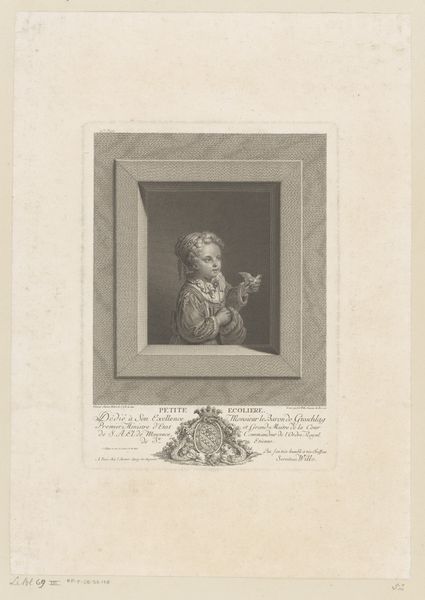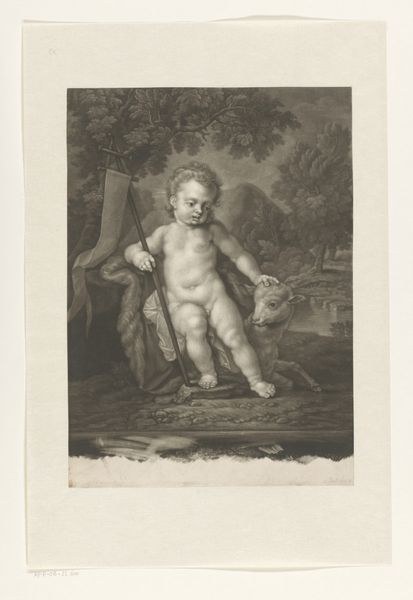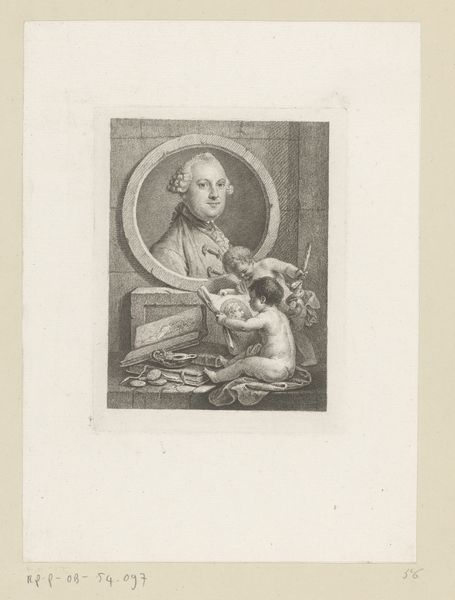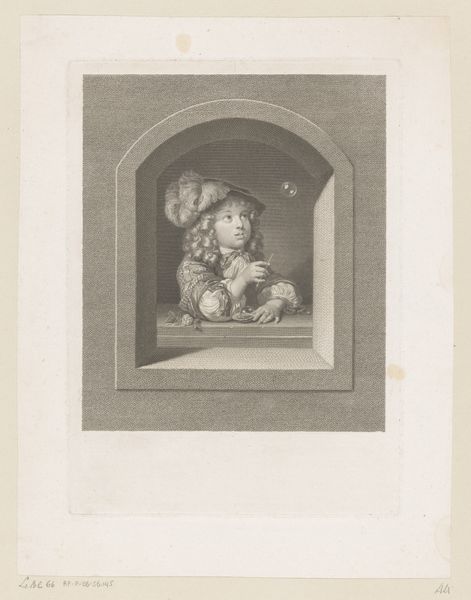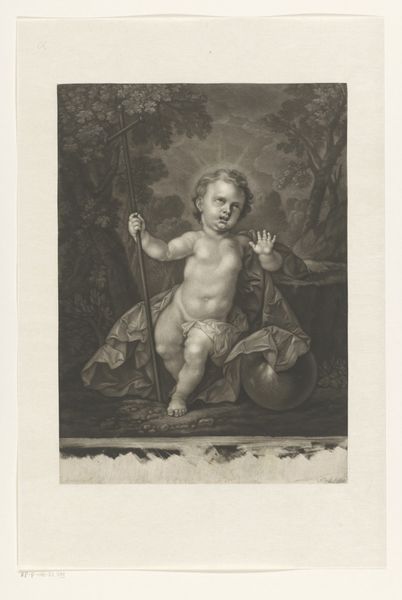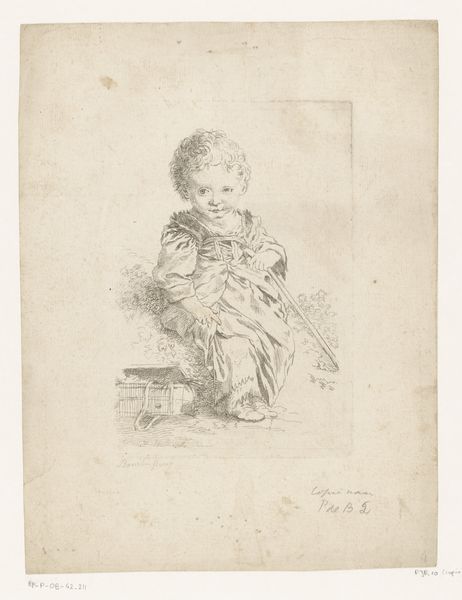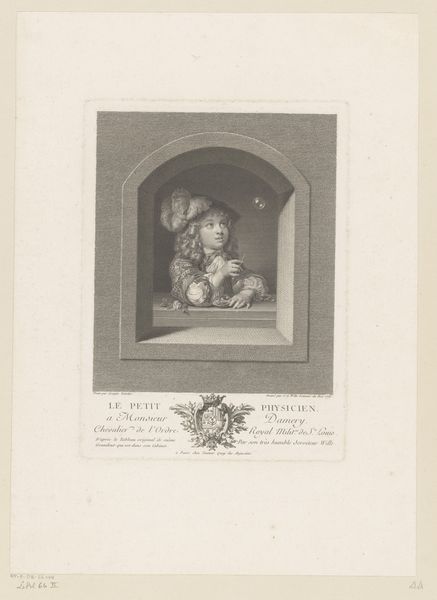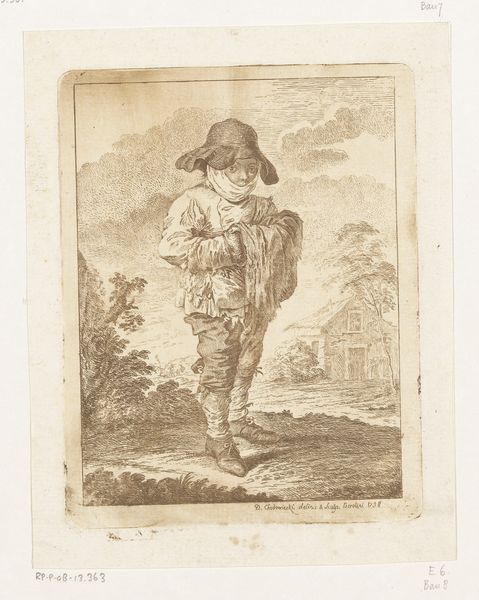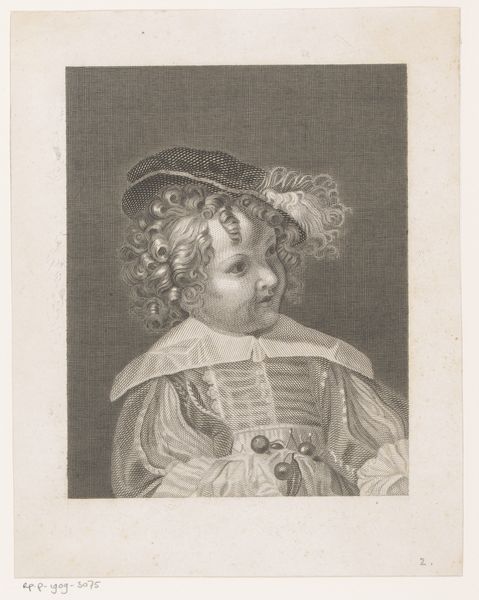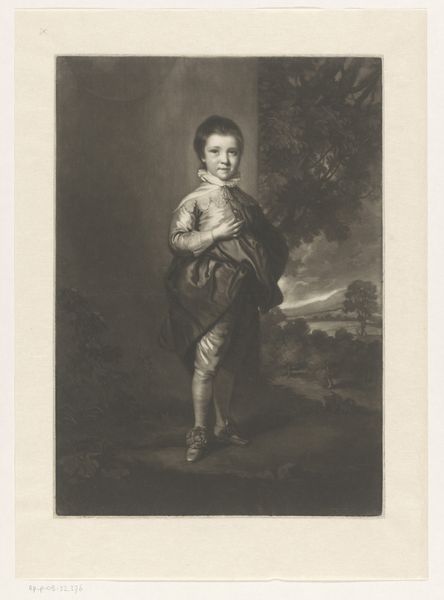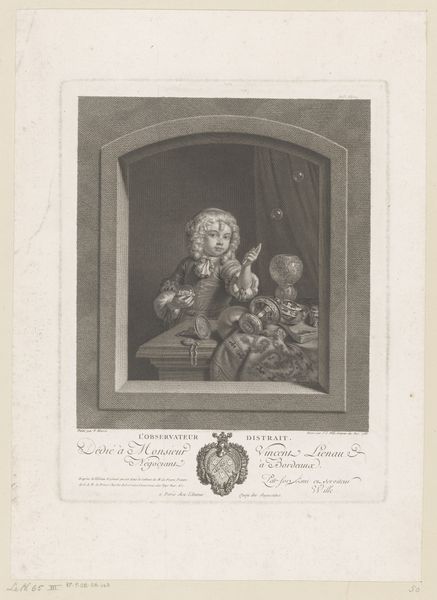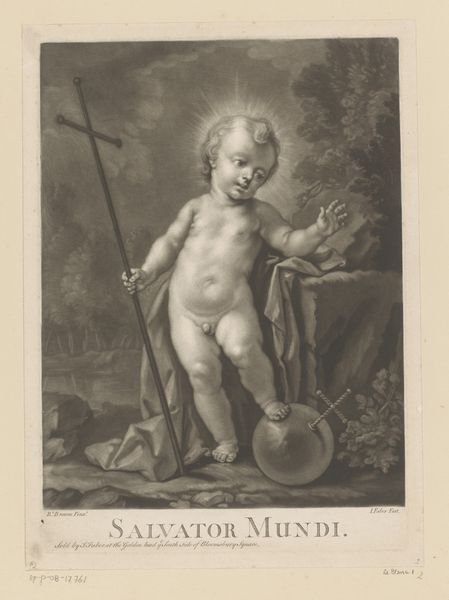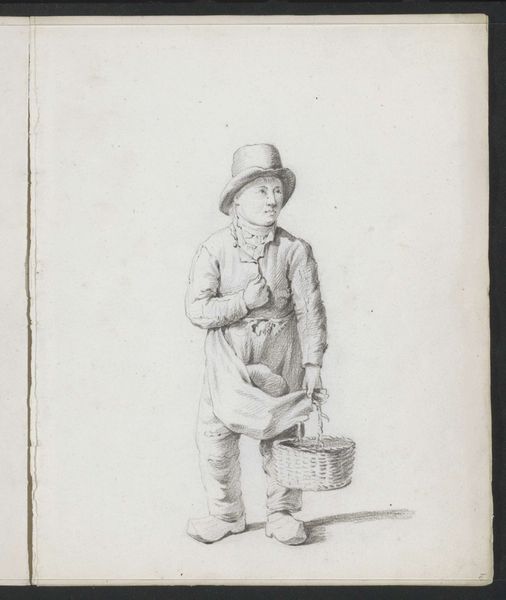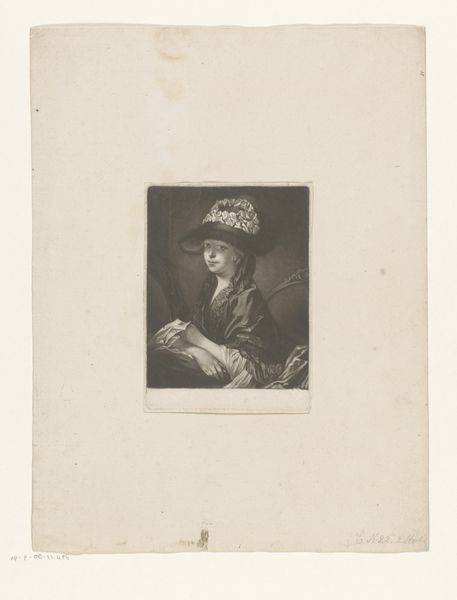
Copyright: Public Domain
Curator: What a wonderfully delicate portrait! This is François Eisen's "Kinderbildnis des Grafen Paul Stroganoff," a pencil and ink drawing from around 1770-1775. Editor: Delicate is right; it has such a soft, almost ethereal quality to it, especially given its restricted grayscale palette. Curator: The composition is really quite brilliant, isn't it? Notice how the oval format constricts the figure, intensifying the focus on his features, creating an intimacy with the viewer? Editor: Absolutely. And that round fruit, echoing the oval frame and his face, almost like an orb of power held by this tiny nobleman. Fruit, since antiquity, signifies wealth, prosperity and power, and is frequently represented in portraits of royals and aristocracy. It emphasizes his family's status. Curator: The layering of light and shadow is remarkable, creating depth while softening the sharp lines, which could disrupt the infant’s gentle form. Eisen balances formal precision with the soft imprecision of babyhood. Editor: Yes, the costume—that elaborate bonnet! It speaks volumes. Infant mortality was high then; portraying children was often a way to commemorate and immortalize them within a lineage. These accoutrements underscore family prestige but also remind us of the stakes involved in familial legacy. Curator: Observe also the almost palpable textures that Eisen is able to coax from his pencil. There’s a stunning contrast between the coarse weave of the cap and the silkiness of the robe. It adds complexity to an image of a young noble. Editor: And isn’t it intriguing how such a small-scale drawing on paper manages to evoke such grandeur? This drawing captures the fragility and pomp intrinsic to representing status in the 18th century. Curator: Precisely. This drawing offers a window into both aesthetic preferences and societal concerns. Editor: An heirloom preserved in ink—brilliant.
Comments
No comments
Be the first to comment and join the conversation on the ultimate creative platform.
